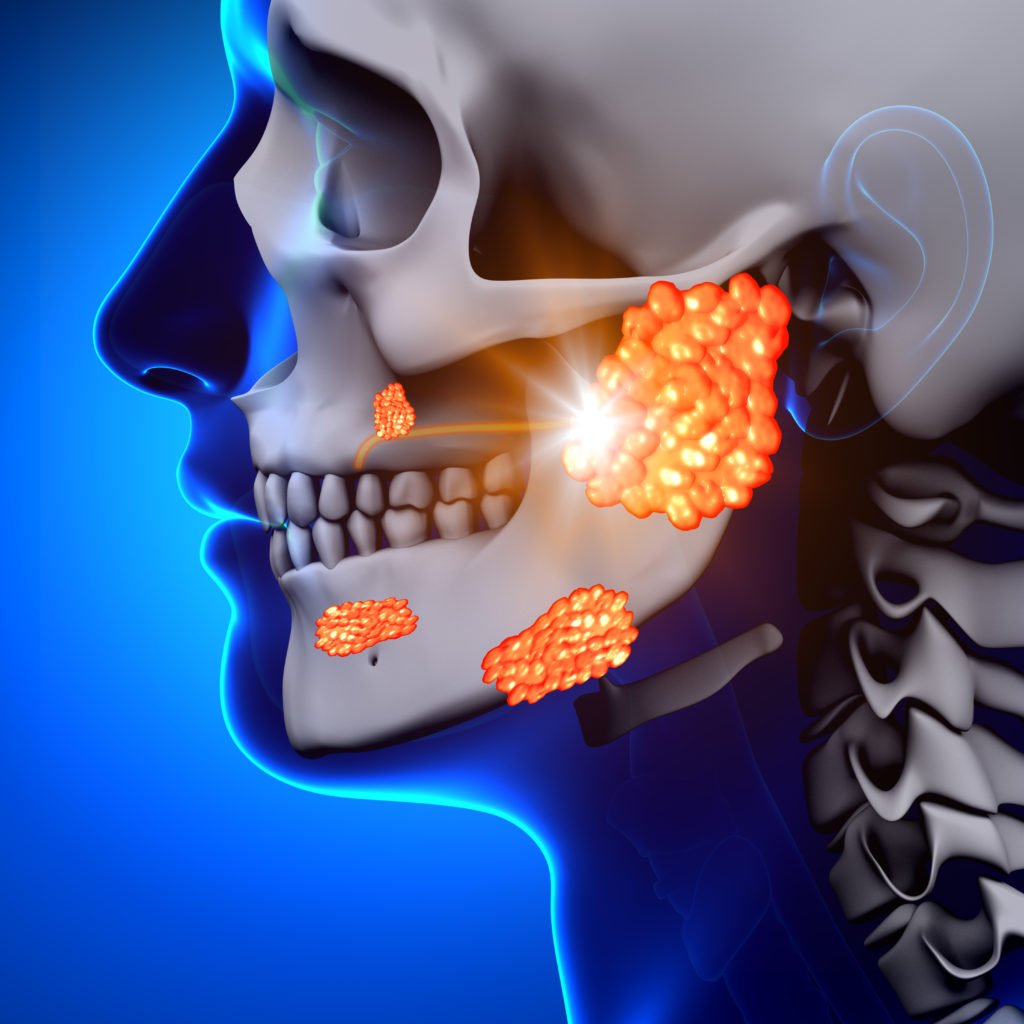Stay hydrated for healthy salivary glands
There are three paired named major salivary glands and up to a thousand small unnamed minor salivary glands in the head and neck region. These are responsible for the production of approximately 1.5 litres of saliva every day. Amongst these, the largest are the parotid glands that are located below the ear lobe and around the angle of the jaw on each side. It is also the gland that is most commonly affected by tumours, mostly being non-cancerous or benign.
Other two 2 pairs of named salivary glands are Submandibular and Sublingual glands. The submandibular gland is located below the jaw bone as the name suggests – “sub” + “mandible” and sublingual gland is located below the tongue (“sub” + “lingual”).
Pathology and Symptomatology
Few of the common salivary gland disorders are:
Salivary Gland Stones (Sialolithiasis)
These are small stones formed within the glands or in the draining ducts. The exact reason for their formation is not known, however, they are commonly seen when salivation reduces or thickens. Such as due to dehydration and as a side-effect of certain medications.
Symptoms: Pain that worsens on eating
Sialadenitis
It is the infection of the substance of the glands. It is a painful condition which may be bacterial or viral in origin.
Symptoms: Pain, pus, foul-smelling saliva, fever and chills.
Viral infections
Mumps is the commonest viral infection of salivary glands. It is a very painful condition.
Symptoms: Pain, fever, malaise, loss of appetite.
Cysts
When salivary outflow is obstructed in the gland, it leads to the formation of retention cysts. A ranula is a salivary retention cyst in the floor of the mouth and can grow and appear as a swelling in the neck, this is known as a plunging ranula.
Symptom: Painless, often translucent lump.
Benign tumours
These are non-cancerous tumours and are commonly seen in the parotid gland. Pleomorphic adenoma is the most common parotid gland tumour, followed by Warthin tumour.
Symptoms: slow-growing swelling
Malignant or cancerous tumours
These are more common in the smaller salivary glands and minor salivary glands.
Symptoms: slow-growing or longstanding swelling, adjoining nerves may be involved.
Sjogren’s syndrome
Salivary glands are affected as a part of an autoimmune disorder that also affects the lacrimal glands, sweat and sebaceous glands. More common in women. It may be associated with rheumatoid arthritis, lupus or scleroderma.
Symptoms: Dryness of mouth and eyes.
Sialadenosis
It is an enlargement of salivary glands with no associated inflammation.
Symptom: Painless enlargement of the parotid gland.
Diagnosis and Management
A detailed medical history and physical examination are followed by a few investigations to arrive at a diagnosis. Fine Needle Aspiration Cytology (FNAC or Needle Biopsy) is a valuable tool in the diagnosis of salivary gland pathology. Amongst the imaging Ultrasound(USG), Computed Tomography (CT Scan) and Magnetic Resonance Imaging (MRI) may be advised depending on the suspected pathology.
Treatment
Pathology dictates the treatment. Infections and inflammation are treated medically initially although in certain conditions such as the stones sialendoscopy or surgery may be advised. Tumours both benign and malignant are treated by surgery followed by adjuvant treatment if needed.

